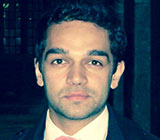 Looking back at the kind of medical school environment that previous generations were exposed to, I often wonder what the clinical teaching must have looked like. Having graduated from medical school in 2009, I’ve spent my entire career being taught according to evidence-based medicine and clinical guidelines and it’s not easy to imagine what life would have been like before they became ingrained in clinical practice. Did students follow consultants around and write down all their management plans and revise them for the exams? What would happen if there were conflicting management approaches amongst different doctors that taught you—which answer would you learn?
Looking back at the kind of medical school environment that previous generations were exposed to, I often wonder what the clinical teaching must have looked like. Having graduated from medical school in 2009, I’ve spent my entire career being taught according to evidence-based medicine and clinical guidelines and it’s not easy to imagine what life would have been like before they became ingrained in clinical practice. Did students follow consultants around and write down all their management plans and revise them for the exams? What would happen if there were conflicting management approaches amongst different doctors that taught you—which answer would you learn?
Of course, medical students of today have no such worries. They are well versed in the importance of systematic reviews and national guidelines and can invariably tell you exactly where to access suitable information and how to appraise it. And it’s clearly great news that they can do this. The evidence-based medicine movement has undoubtedly revolutionised medical care and encouraged medical students and doctors to bring a more scientific approach to treatment decisions.
As with everything in medicine though, it isn’t quite as simple as that. Although a critical and scientific method of thinking may well have reduced the variation of care provided, as Iona Heath argues in her recent essay, it hasn’t always led to better care overall. Being a clinician, she reminds us, is about relieving suffering and treating individuals according to principles of humanity as well as science. It is about working hard to understand patients’ lives, including their values, beliefs, and fears. Without this primary focus on improving an individual’s life, the pursuit of the most logical and scientific option can mean that doctors miss opportunities to relieve suffering and worse still, cause actual harm.
But how do we get this message across to the doctors of tomorrow? The hierarchy of evidence model is attractive to students because it is absolute and fixed and therefore possible to learn. It does, however, place an implicit value on numbers over words and because expert opinion is (rightly) at the bottom of the hierarchy, may in some way be interpreted as meaning that humanity and individuals are somehow less important than science and populations. How can we demonstrate the importance of thinking both scientifically and unscientifically simultaneously in a single clinical interaction? Scientific thinking values populations whilst clinical thinking values individuals and the best doctors fuse these two modes seamlessly.
The solution to this conundrum, as you may imagine, is not straightforward. A number of stars have to align for truly transformational teaching to take place. Only when the learning environment, physical space, topic material, teaching format, student interest and teacher enthusiasm are all at optimal levels can a session really challenge students to change their way of thinking. It’s these moments, though, that make teaching such a fulfilling and worthwhile pursuit.
The high points of my teaching career have come when I’ve been able to prompt students to reflect and debate on issues that I, myself, have been passionate about. The fact that they don’t always share my opinions is refreshing and reassures me that they are thinking critically and broadly—exactly the attributes that will serve them well in their medical careers.
The problem comes though when the topic that you’re passionate about doesn’t fit with the momentum of ideas that your students are exposed to. Take, for example, the teaching of public health within an undergraduate medical curriculum. For decades, medical school teaching took place almost exclusively in teaching hospitals, with hierarchical and imposing clinical environments and a focus on rare diseases and specialist physicians and surgeons who can intervene heroically with life-saving treatments. In such an environment, the task of exciting students about public health must have been an unenviable one and indeed, this challenge lives on even with the more integrated medical curricula of today.
I’m left with a heavy feeling of responsibility as a medical educator to think carefully about the messages that evidence-based medicine teaching gives to medical students. Scientific thinking is essential but we must be careful to promote it only within a broader and more comprehensive, person-centred approach. In medicine, humanity should always be the bigger picture and so teaching about it must be instinctive and effortless and should never run against the grain.
Ahmed Rashid is an NHS general practitioner and teaching fellow at UCL medical school. You can follow him on Twitter @Dr_A_Rashid.
Competing interests: None declared.
